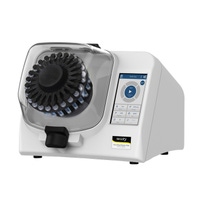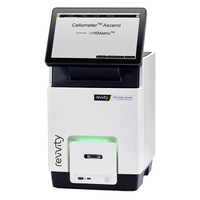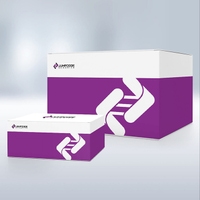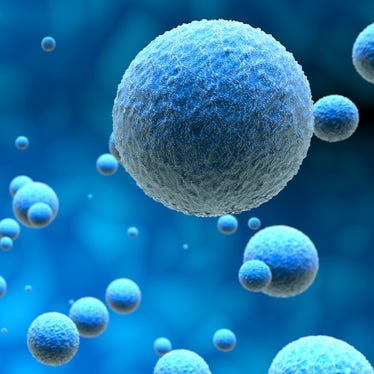Explore our single cell sequencing products
Our solutions can help you address challenges at key steps in your single cell sequencing workflow.
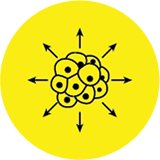
Sample dissociation
To obtain meaningful results, a consistent tissue dissociation method that maximizes cell viability and minimizes impact on cellular processes is required to generate a working cell suspension.
To obtain meaningful results, a consistent tissue dissociation method that maximizes cell viability and minimizes impact on cellular processes is required to generate a working cell suspension.
The Omni Bead Ruptor Elite™ bead mill homogenizer features a unique carriage motion and allows reliable processing at lower speeds. Coupled with optimized dissociation tubes, this design allows gentle disaggregation of samples into uniform single-cell suspensions with high cell viability without the limitation that comes with reliance on expensive or harsh locked-platform dissociation reagents.
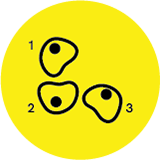
Normalization
Accurate determination of cell concentration and viability of target cells is critical to minimize the variability in the number of loaded cells.
Accurate determination of cell concentration and viability of target cells is critical to minimize the variability in the number of loaded cells.
High fractions of non-viable cells or over and under estimations of cell number can also have a significant impact on recovery. Processing speed can also affect the number of viable cells in suspension as some cell types tend to form aggregates when kept in PBS for extended periods. Fragile cells may experience a decline in health if they are not processed and loaded immediately.
Match your throughput needs with our automated cell counting platforms that deliver cell or nuclei counts from a wide range of primary populations, even when dealing with low sample volumes.

Clean up
The isolation of specific cell populations from complex samples has become a routine lab procedure, made possible by highly specific antibodies.
The isolation of specific cell populations from complex samples has become a routine lab procedure, made possible by highly specific antibodies.
Magnetic bead separation systems work via “Positive Selection” or “Negative Selection” (also referred to as “Negative Depletion”). This depends on whether the antibodies target the cells of interest (positive selection) or unwanted cells (negative selection). In either case, separated fractions of cells can be used for downstream applications. You can simplify your cell isolation and purification with BioLegend’s MojoSort™ cell separation system.
Fluorescence-Activated Cell Sorting (FACS) is another technique used to separate cells based on their staining pattern with fluorescent antibodies. With thousands of antibody and fluorophore combinations, BioLegend can help you build the ideal panel to sort your cells or confirm the phenotype of isolated cells.

Protein labeling
Increase the power of single-cell experiments by combining proteomic and transcriptomic data within a single seamless workflow.
Increase the power of single-cell experiments by combining proteomic and transcriptomic data within a single seamless workflow.
In contrast to mRNA, TotalSeq™ antibody tags exhibit reduced susceptibility to dropouts. This, coupled with the ability to detect hundreds of proteins in a single cell, leads to enhanced sample clustering and the ability to better identify specific cell types.
Our TotalSeq oligo-conjugated antibodies can also be used to pool multiple samples before loading them onto a single-cell isolation platform, streamlining your research process.

Library preparation
Removing abundant and uninformative reads before sequencing allows you to cut through the noise with minimal impact on your workflow.
Removing abundant and uninformative reads before sequencing allows you to cut through the noise with minimal impact on your workflow.
Utilising a CRISPR-based method to enhance usable single-cell RNA-seq data can lead to a 50% increase in useful reads.
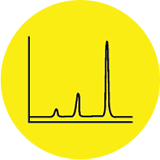
Library QC
It is important to identify low-quality libraries, resulting from cell damage, during an earlier processing step as they could introduce inaccuracies during downstream analyses.
It is important to identify low-quality libraries, resulting from cell damage, during an earlier processing step as they could introduce inaccuracies during downstream analyses.
These misleading results may interfere with the characterization of population heterogeneity or lead to false conclusions regarding gene regulation.
Our automated capillary electrophoresis separation platform performs accurate quantitation and sizing on 24 samples at a time.

Data analytics
A dedicated analysis platform is needed to guide users to make sense of this complex data quickly and easily, without the need for extensive bioinformatics knowledge.
A dedicated analysis platform is needed to guide users to make sense of this complex data quickly and easily, without the need for extensive bioinformatics knowledge.
Visualizing differential gene expression at the single-cell level can otherwise be challenging due to the high variability, errors, and background noise that can appear in the data.
Our scRNA and multiomics platforms increase accessibility and remove scaling barriers caused by high-dimensional data.
Featured products
